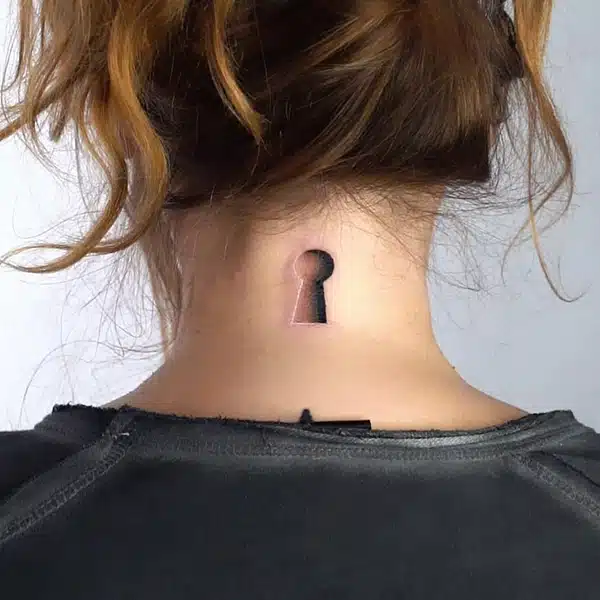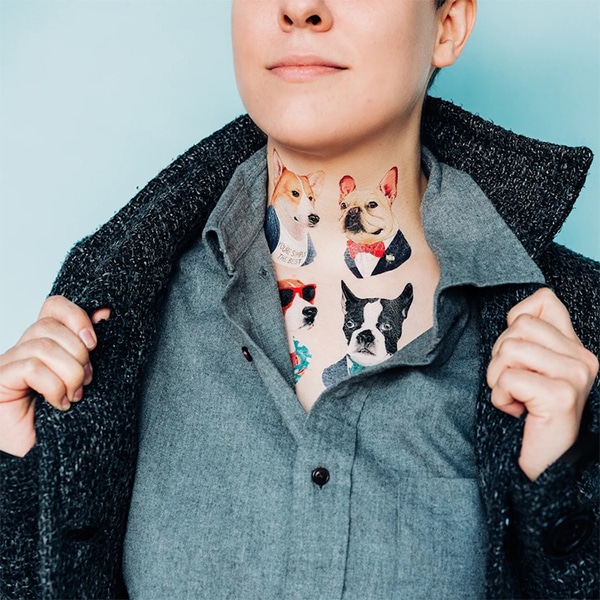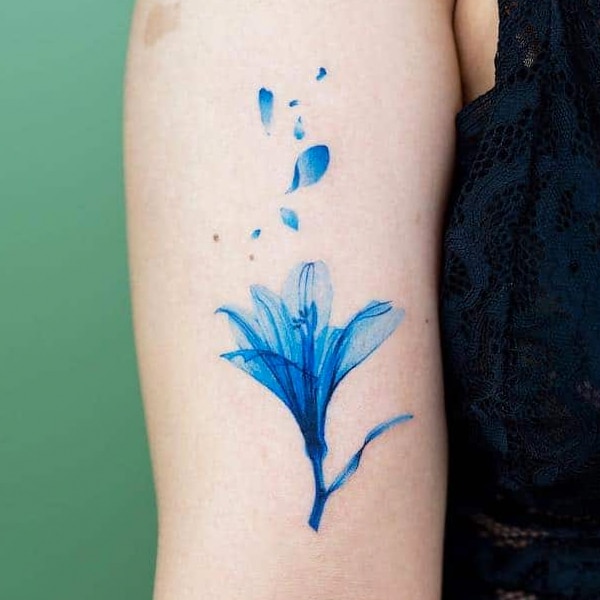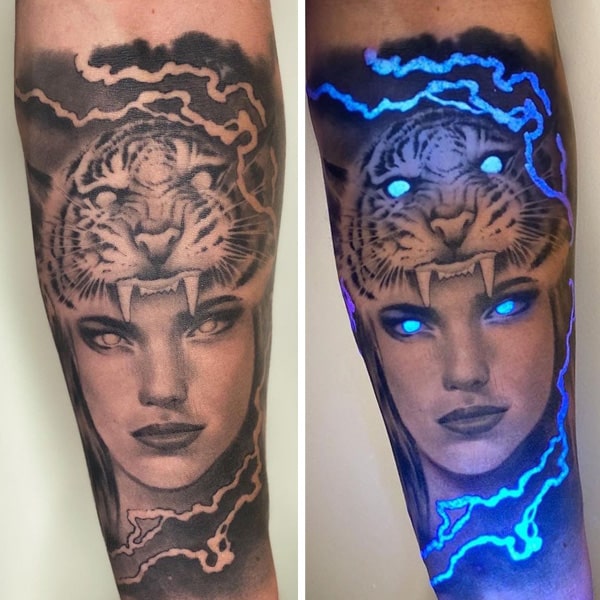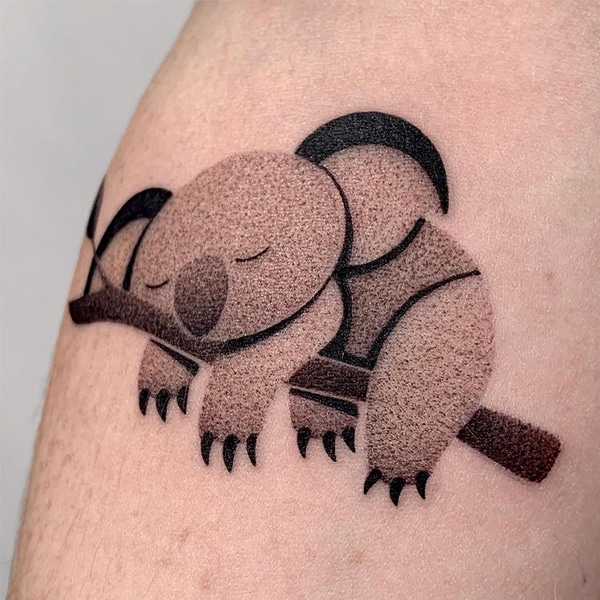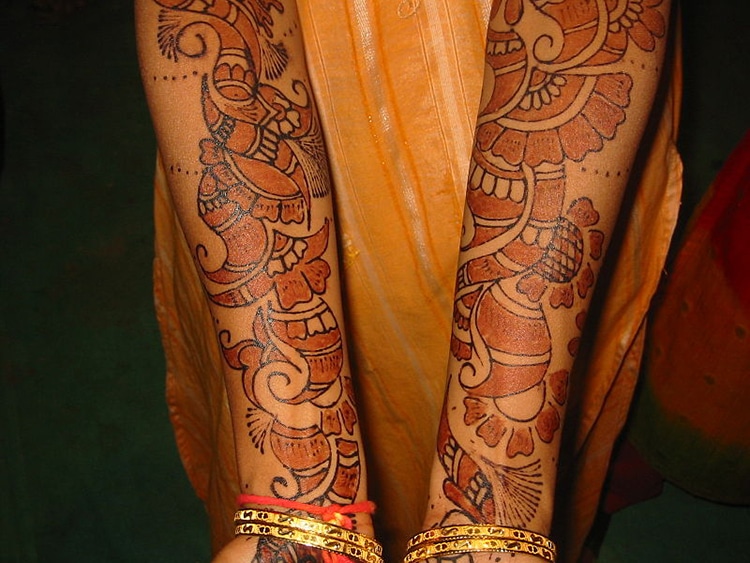
Tattoo with henna, Gujarat, India. (Photo: © Yann Forget via Wikimedia Commons (CC-BY-SA-3.0) )
For anyone who is a fan of body art but too wary to take the leap of permanent ink, there is an alternative that’s been around for centuries—henna.
What is henna?
Henna is an ancient art form that is still practiced today by men and women, young and old, all over the world. These “tattoos” are a form of body art, associated with a distinctive deep orange-red color and intricate patterns on the hands, arms, legs, and feet. There are many different henna designs that stem from rich traditions in India, Africa, and the Middle East. And today, you can create your very own henna tattoo using readily available henna tattoo kits.

Photo: scott.zona (CC BY-NC 2.0)
Where does henna come from?
Henna is a small flowering plant that grows in tropical climates such as Africa and Northern Asia. While its flowers are often used to produce perfume, its leaves contain a useful staining pigment called lawsome (also known as hennotannic acid), in various hues from burnt orange, to deep red. To extract it, the leaves are dried and then crushed into a fine power. In addition to having various health benefits—including the ability to bring down fevers, cure headaches, and reduce sleep issues—the versatile ingredient can be used to dye clothes, hair, and also temporarily, skin.

A henna plant. (Image: Kelson via Wikimedia Commons)
Henna is applied to the skin as a paste, and once washed away, the reddish-orange stain begins to oxidize and darken over the next few days. Although not permanent, the body art can last up to one or two weeks on the surface of the skin, making it a pain-free alternative to traditional tattooing.
History
The art of henna body art has been practiced in India, Africa, and the Middle East for thousands of years. The exact origin of the ancient art isn’t clear—while some argue the first people to use henna to dye their skin were ancient Egyptians, others claim India was the place of origin (where it’s known as Mehndi in Hindi and Urdu). It is thought to have evolved from desert communities who discovered that they could cool themselves down by applying paste made from henna plants to their hands and feet. It wasn’t long until they started applying it in various decorative patterns, and as the designs became more intricate, so did the tradition.
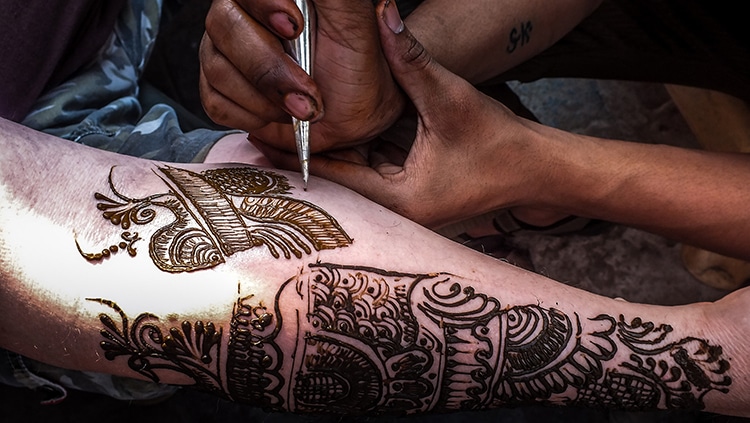
Henna Tattoo in progress, Delhi, India. (Photo: PIVISO)
Eventually both men and women in Hindu and Muslim cultures began to adorn themselves in henna art for special celebrations and religious holidays. Pre-wedding “Night of Henna” parties became popular, where Indian brides, along with their female friends and family, would gather to be adorned in henna patterns as a symbol of luck and blessings. Henna designs were also painted on pregnant women who, as tradition, would enjoy a few weeks off from housework duties in preparation for birth as well as to protect their body art. Today, some of the same traditions live on, and the beautiful designs vary depending on the culture.
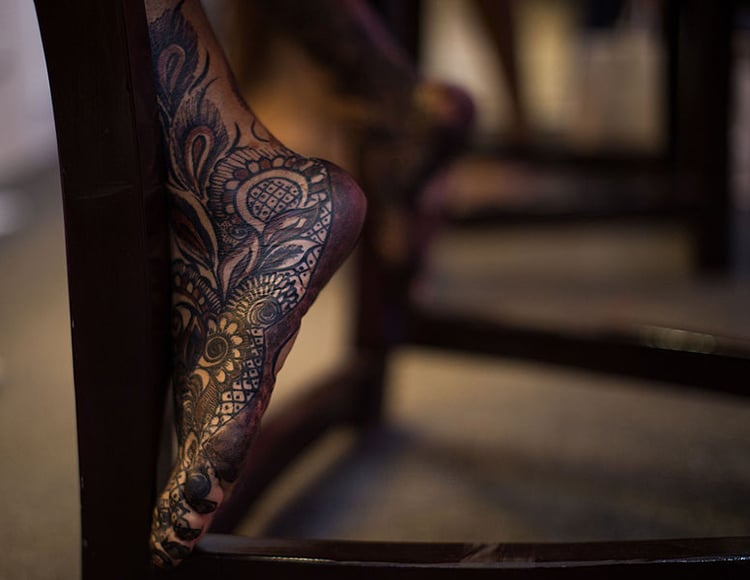
Bridal feet (Photo: Daniel Msirikale via Wikimedia Commons)
Indian Mehndi designs often feature intricate lace, floral, and paisley patterns, and often incorporate representations of the sun on the palm. Henna art often covers the wearer’s entire hands, arms, and feet, with often very little space between the lines.
Among African cultures, henna patterns tend to be bold and geometric, while Arabic designs are usually more delicate, often featuring feminine floral motifs.













































































